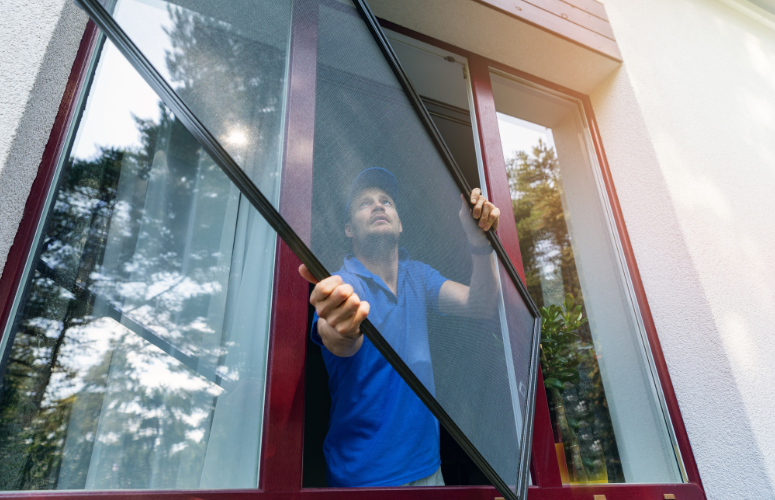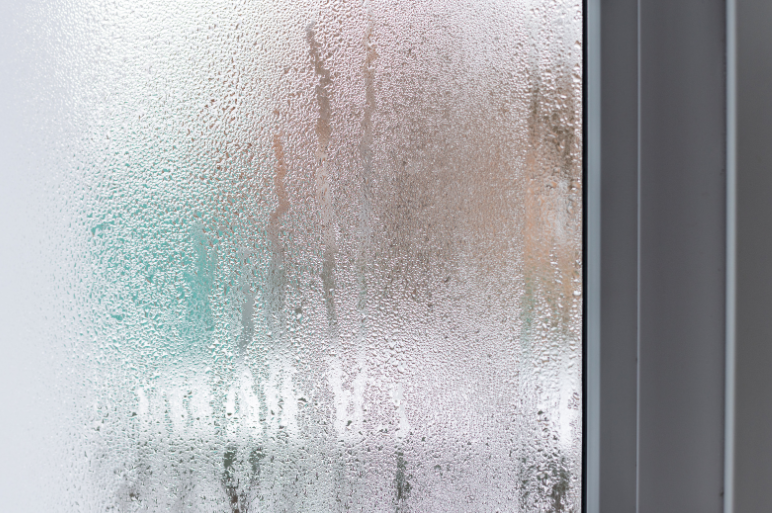
January 10, 2025 by WindowRama
Quick Steps To Winterize Your Home In 2025
Winterizing your home is crucial to provide energy savings and extend the lifespan of your windows and doors. Properly winterizing can also provide some safety benefits in the event of extreme weather conditions such as storms or blackouts! But what are some easy ways you can prevent costly weather damage? Here are some tips from our partner Andersen Windows on how to prepare your home for the cold weather:
1. Clean your windows and store your insect screens
- Remove and clean your insect screens
- Clean your windows
- Store your insect screens upright or flat in a clean, dry area.
Tip: Properly storing your insect screens each season will help protect them from ice and other damage.

2. Make sure windows and doors are properly sealed to limit drafts
Drafts can increase your home’s energy use by as much as 5-30% each year! Check on the insulation of your windows and doors by taking these three simple steps:
Inspect weather-stripping for any gaps or damage. There are many different methods to inspect weather stripping for damage. A visual test, light test, or paper test are 3 common methods!
The visual test: to perform a visual test, simply look to see if there are any indications of cracks or tears. You may also notice that the weather stripping is detaching from the frame which is a clear sign it is time for replacement!
The light test: at night, ensure that all windows and doors are closed and simply shine a flashlight around the edges of the window! If you see light poking through it indicates that there are gaps in the weather stripping which will lead to drafts.
The paper test: If you can slide a piece of paper easily between the door or window and its frame then there is a clear gap which will contribute to higher energy bills.
Inspect the exterior sealant for signs of age, cracking or other damage. It is not just the weather stripping, but external sealant needs to be replaced roughly every 5 years depending on the quality of the sealant and the weather conditions that can decrease the lifespan.
Make sure all windows and doors are fully closed and locked. If you aren’t in the habit of locking windows and doors for security, then consider locking them for energy bill savings! Windows that are closed and locked provide a tighter seal and greater energy efficiency. As you operate your windows, take note if they are closing hard or unevenly. These are signs that adjustments might be needed. A window that is not square will not seal properly.
Tip: Lower Your Energy Bill This Winter
3. Control window condensation by reducing humidity
Condensation appears when warm, moist air meets cooler surfaces, like a cold drink on a hot summer day or your window on a cold winter day. Condensation on your window’s interior can potentially freeze on the glass or drip into the interior. Some level of condensation is normal. But if left unchecked it may start to cause damage to the windows and frames. If excessive condensation freezes it may put pressure on the windows and the frames and cause damage. Additionally, the moisture in excess can provide a perfect environment for mildew or mold to grow. If you’re noticing any of these issues, it’s a sign the humidity levels are too high inside your home (30 to 35% is recommended during the winter months). Check your thermostat, as it may monitor the humidity level. If not, you can buy an inexpensive tool called a hygrometer to see your humidity levels.

Here are a few ways to reduce indoor humidity:
- Check your ventilation.
- Use a dehumidifier.
- Turn the humidifier on your furnace down (or off).
- Keep blinds or curtains open during the day.
- Leave ceiling fans on to promote air movement.
- Use an exhaust fan in bathroom areas when showering.
Tip: It’s important to note where condensation is appearing. If you notice fog in between the panes of glass on a dual-pane window, it’s a sign of seal failure and an indication that you need to replace the window.
4. Invest in long-term solutions
If you’re ready for a more permanent solution, window replacement can help reduce costs on your monthly energy bills, improve the comfort of your home, and even increase real estate value — realtors agree that Andersen® windows and doors increase the value of a home by at least 15%.* Depending on how long it has been since you last replaced your windows its possible that energy standards have changed and windows and doors may have become more efficient.
Plus, windows and doors can be installed at any time — regardless of the season. Here are a few options to be aware of:
ENERGY STAR® certified windows will not only improve the comfort of your home year-round, they can also reduce your monthly energy bills. For example, replacing single-hung windows reduces bills by an average of 13% nationwide.** These windows can help reduce both heating and cooling costs through the use of climate-appropriate glass options.
Tip: Be sure to check out how window and door energy performance are rated!
Andersen® Narroline® conversion kits are a great option if your home has Narroline double-hung windows that were made from 1968 to 2013. These double-hung conversion kits can turn older windows into convenient, tilt-wash double-hung windows with high-performance Low-E4® glass that’s 45% more energy efficiency in the winter months.*** To identify if the products in your home are Narroline windows, visit the guide here.
Is it time to replace your windows and doors? Our installation experts are ready to help! Request a FREE consultation today!
*2022 Andersen brand survey of U.S. realtors and their experience for the homes they sell
**Winter values are based on comparison of Andersen® double-hung window conversion kit U-Factor to the U-Factor for clear dual pane glass non-metal frame default values from the 2 2006, 2009, 2012, 2015 and 2018 International Energy Conservation Code “Glazed Fenestration” Default Tables.
***Winter values are based on comparison of Andersen® double-hung window conversion kit U-Factor to the U-Factor for clear dual pane glass non-metal frame default values from the 2 2006, 2009, 2012, 2015 and 2018 International Energy Conservation Code “Glazed Fenestration” Default Tables.